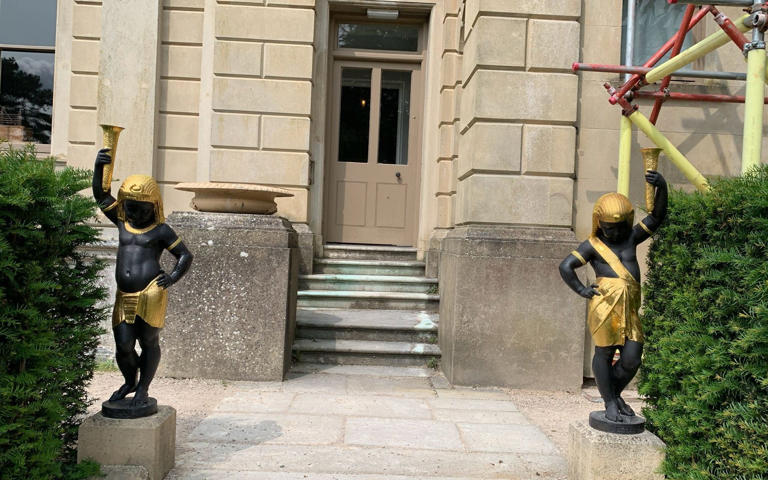
The National Trust has placed a trigger warning next to pair of ancient Egyptian slave statues
The statues depicting two children clothed in gold, raising torches and standing on either side of a staircase at Cliveden House in Buckinghamshire.
The Telegraph reports: A report published by the Prosperity Institute revealed that a trigger warning has been placed next to them.

BYPASS THE CENSORS
Sign up to get unfiltered news delivered straight to your inbox.
You can unsubscribe any time. By subscribing you agree to our Terms of Use
A placard says the Trust is “working to redisplay and reinterpret these statues” so that the “appalling histories of slavery and the slave trade” can be recognised.
Canada Begins Euthanizing Child Rape Victims While Pedophiles Walk Free
It reads: “Today, the depiction of black people in European sculpture causes upset and distress to many. We don’t want to censor or deny the way colonial histories are woven into the fabric of our places.
“Cliveden, including these statues, is Grade I-listed, meaning it has been identified as nationally significant. So we’re working to redisplay and reinterpret these statues in a way that acknowledges the appalling histories of slavery and the slave trade.
“We invite you to consider what they represent about British and global history.”

Dr Radomir Tylecote, managing director of the Prosperity Institute, said the report exposes how the National Trust “uses woke rhetoric while pursuing policies that patently reduce accessibility.”
He added: “Supporters of the Trust have defended its woke initiatives by claiming they make the organisation more accessible and inclusive.”
The statues, also known as torcheres, were created in the 19th century by Val D’Osne, a leading French art foundry, after a model by the French visual artist Mathurin Moreau. They were bought by Hugh Grosvenor, the 1st Duke of Westminster, who lived at Cliveden from 1868 to 1893.
They incorporate several stylistic motifs reflecting the fashions and cultural interests of the time.
The figures are modelled as children, but their pose and function derive from a much older European decorative tradition known as the “Blackamoor,” which was a European art style that depicted highly-stylised figures, often African males, in subservient or exoticised form. The term is now viewed as racist or culturally insensitive.
A trigger warning was also added to the website of Trengwainton Garden, a National Trust property in Cornwall. The website discusses the history of Sir Rose Price, the owner of the property in 1814, whose wealth came from inherited sugar plantations in Jamaica.
A box reads: “Please be aware: The following web page discusses the legacy of colonialism at Trengwainton and historic slavery and includes references to histories that some people may find upsetting.”


